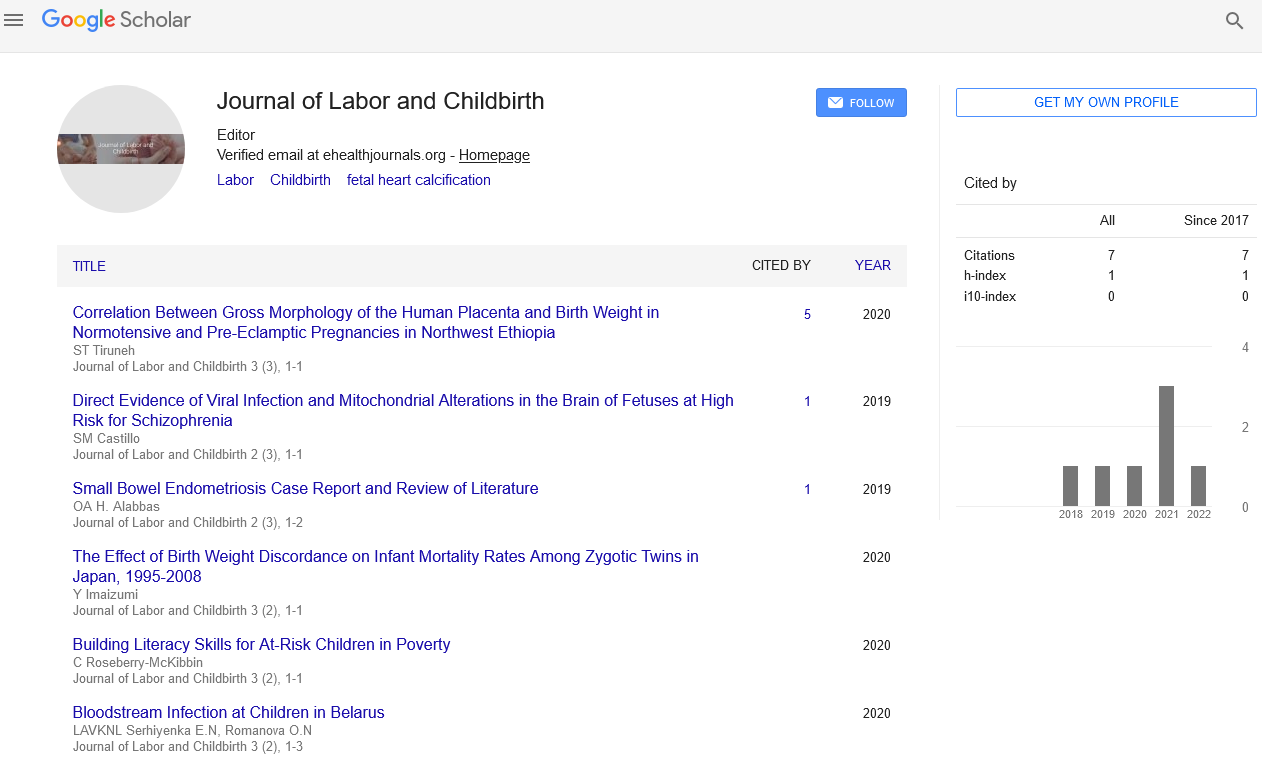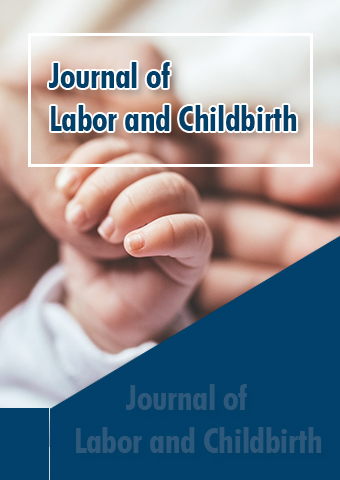Perspective - Journal of Labor and Childbirth (2024) Volume 7, Issue 5
Birth Trauma: Understanding and Addressing its Impact
- Corresponding Author:
- Pau Baizan
Department of Child Welfare,
Saavan University,
Bilbao,
Spain
E-mail: pau.baizan@upf.edu
Received: 28-Sep-2024, Manuscript No. jlcb-24-149123; Editor assigned: 03-Oct-2024, PreQC No. jlcb-24-149123 (PQ); Reviewed: 17- Oct-2024, QC No. jlcb-24-149123; Revised: 21-Oct-2024, Manuscript No. jlcb-24-149123 (R); Published: 28-Oct-2024, DOI: 10.37532/jlcb.2024.7(5).274-275
Introduction
Birth trauma, a term that encapsulates both physical injuries sustained during childbirth and the psychological distress experienced by the mother, is a significant but often overlooked aspect of maternal health. The experience of childbirth, while a natural process, can sometimes result in unexpected complications, leaving lasting scars on the body and mind. Understanding birth trauma involves recognizing its causes, acknowledging its effects and exploring ways to prevent and manage it effectively.
Description
Understanding birth trauma
Birth trauma can be broadly classified into two categories: Physical and psychological. Physical birth trauma refers to injuries sustained by the mother or baby during delivery. These injuries can range from minor lacerations to more severe conditions such as fractures, nerve damage or even organ rupture. On the other hand, psychological birth trauma refers to the emotional and mental distress experienced by the mother due to a difficult or traumatic childbirth experience. This can manifest as feelings of fear, anxiety, helplessness or loss of control during labor and may lead to conditions such as Post-Traumatic Stress Disorder (PTSD) or postpartum depression.
Causes of birth trauma
Several factors can contribute to birth trauma and these may vary depending on individual circumstances. Some common causes include:
Complicated labor: Prolonged labor, the use of forceps or vacuum extraction and emergency cesarean sections can increase the risk of birth trauma. These interventions, while sometimes necessary, can lead to physical injuries for both mother and baby and may be psychologically distressing.
Medical interventions: While medical interventions during childbirth are often necessary for the safety of the mother and baby, they can sometimes contribute to birth trauma. For instance, an unplanned cesarean section or the need for resuscitation of the newborn can be overwhelming and traumatic for the mother.
Inadequate support: The level of support a woman receives during childbirth can significantly impact her experience. A lack of emotional support, poor communication from healthcare providers or feeling dismissed or ignored during labor can contribute to psychological birth trauma.
Effects of birth trauma
The effects of birth trauma can be profound and long-lasting, impacting not only the mother but also her family and her relationship with her newborn.
Physical consequences: Physical birth trauma can lead to chronic pain, incontinence, sexual dysfunction and other long-term health issues. For instance, injuries such as perineal tears or pelvic floor damage can affect a woman’s physical well-being and quality of life for years after childbirth.
Emotional and psychological impact: The psychological impact of birth trauma can be significant. Many women report feeling a sense of failure, guilt or shame following a traumatic birth. These feelings can lead to conditions such as PTSD, characterized by flashbacks, nightmares and severe anxiety related to the birth experience. Postpartum depression is also a common consequence, with symptoms including sadness, irritability and difficulty bonding with the baby.
Impact on bonding and parenting: Birth trauma can affect the mother’s ability to bond with her baby, which is crucial for the infant’s emotional and psychological development. A traumatic birth experience may lead to feelings of detachment or a reluctance to engage in caregiving activities, potentially affecting the mother-child relationship.
Prevention and management of birth trauma
Preventing and managing birth trauma requires a multifaceted approach that involves healthcare providers, the mother and her support system.
Improving communication and support: One of the most effective ways to prevent psychological birth trauma is through improved communication and support during labor. Healthcare providers should prioritize clear, compassionate communication, ensuring that the mother is informed and involved in decisions regarding her care.
The presence of a supportive birth partner or doula can also provide emotional comfort and help reduce anxiety during childbirth.
Promoting informed consent: Ensuring that women are fully informed about the risks and benefits of medical interventions during childbirth is crucial. Informed consent empowers women to make decisions about their care, which can reduce feelings of helplessness and improve their birth experience.
Addressing pre-existing mental health conditions: For women with a history of mental health issues, proactive management during pregnancy can help reduce the risk of birth trauma. This may involve counseling, mental health support or developing a birth plan that addresses specific concerns.
Conclusion
Bonded labor is a stark reminder of the persistence of slavery in the modern world. Addressing this issue requires concerted efforts from governments, businesses, civil society and individuals alike. By addressing the root causes of bonded labor, strengthening legal protections, promoting economic opportunities and advocating for social justice, we can work towards eradicating this egregious violation of human rights.

